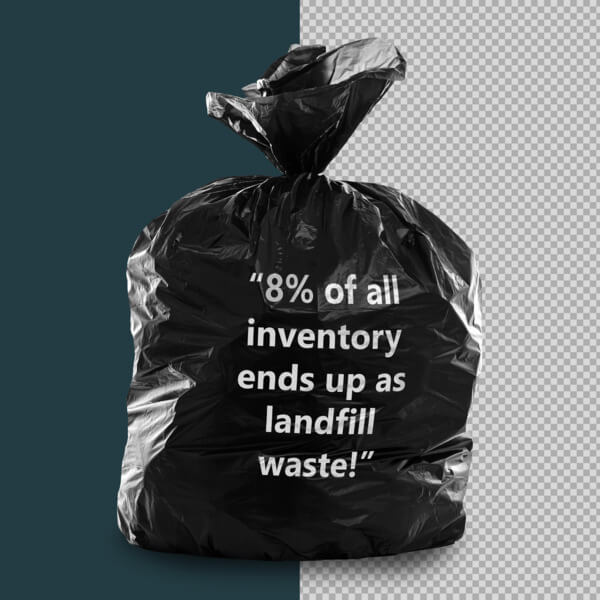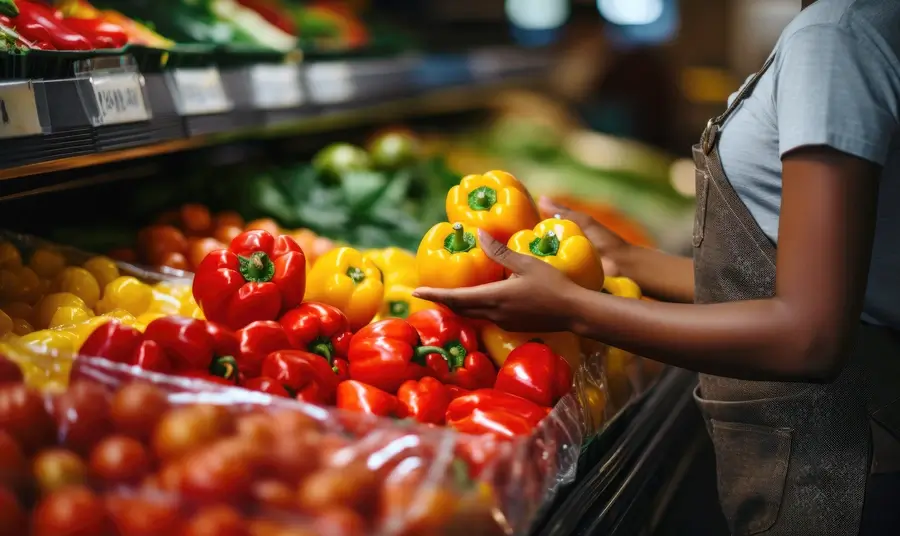Managing a food supply chain requires navigating numerous challenges, including high-cost pressure, increasing demand for traceability, and ensuring the resilience of the supply chain. But perhaps most crucially today, making sure sustainability is managed effectively.
Researchers from the International Energy Agency (2018) stated that around 8% of global greenhouse gas emissions come from freight transportation, and when emissions from warehouses and ports are included, this number increases to 11%. For the food and beverage industries, the logistics footprint is even bigger as 14% of inventory is lost before it reaches the retailer (FAO, 2019).
These astonishing numbers illustrate the importance of adopting sustainable supply chain practices in the food and beverage industry. The importance of ESG initiatives in the supply chain is underscored by a McKinsey & Company survey (2020), which found that 7 out of the 9 most common ESG initiatives directly involve or significantly impact the supply chain.
Consumer expectations
Not only do companies see the need for a change towards more sustainable practices, but consumers are increasingly expressing their need for sustainable products. The Food Industry Association (2023) states that more than 30% of shoppers say that sustainability efforts and practices are among the most important attributes in their choice of a store.
This same study has shown that the younger generations like Gen Z and Millennials are willing to back this up with their wallet. Specifically, 48% of Gen Z and 59% of Millennials are prepared to pay more for environmental-friendly products. Therefore, integrating sustainability into your supply chain is essential for maintaining a competitive edge that is future-proof.
Sustainability in the supply chain
For decades, companies have worked to optimise their supply chain in which the trade-off between operational costs and delivering service to their customers was key. This has led to a complex supply chain landscape of today: going from next day to same-day or even 15 minutes same day deliveries.
To satisfy the ever-growing needs of the customer, the assortments have kept on expanding, leading to a complicated catalogue. And now this extra factor, sustainability, has been added. So, change is needed, and you would like to be part of the solution, not the problem. But how?
Sustainability as an objective
Luckily, technology has developed a lot over the last years as well and can help to transform these traditional supply chains. An example of what this new technology can provide you is data-driven forecasts that are generated automatically.
This will enable the demand planning department to predict demand more accurately, resulting in a reduced chance of overstocking and it will become less likely that products meet their shelf life in your warehouse.
As previously mentioned, waste is a critical factor to consider. While maintaining a high service level is essential, why not also use the maximum/remaining shelf life as part of an automated inventory management system?
By integrating sustainability objectives into inventory management, companies can balance the need for availability with the incentive to minimize waste. This dual focus not only optimizes costs but also aligns with environmental goals and consumer expectations for sustainable practices.
Another way to live up to the objective of acting more sustainably is by creating an ABC analysis. This analysis is often done in inventory management to focus on articles which either serve many of your customers or articles that generate most of your revenue, but another dimension could be added: the carbon footprint of an article.
A-items would be more sustainable than your C-items and you could adjust your service levels accordingly. For example, you could differentiate service levels to minimise the impact of waste for products with a large carbon footprint.
This will not only decrease waste in your supply chain but this categorization can also help to gain consciousness on the carbon footprint of your assortment.
Sustainability is no longer merely a trend; it is a fundamental expectation from the consumer. And something that the food and beverage industry must address. To be able to meet this expectation,traditional supply chain practices need to be reviewed.
By optimizing transportation, sourcing locally and minimizing waste, companies can reduce their carbon footprint. By embracing technology, business can create the capabilities to achieve sustainability goals while maintaining operational excellence.
Sustainability as an extra objective brings additional challenges to the ever-so-complicated food supply chain. But it does not have to be as complicated as it seems, with the right tools these challenges can still be effectively managed.
FAQs
Why is sustainability important in the food supply chain?
Sustainability is crucial in the food supply chain because it helps reduce greenhouse gas emissions, minimizes waste, and meets consumer demand for environmentally friendly products. Sustainable practices ensure the long-term viability of supply chains and align with consumer expectations.
How does freight transportation impact greenhouse gas emissions in the food supply chain?
Freight transportation contributes to approximately 8% of global greenhouse gas emissions. When emissions from warehouses and ports are included, this number rises to 11%. In the food and beverage industry, a significant portion of inventory is lost before reaching the retailer, further emphasizing the need for sustainable practices.
What role do consumer expectations play in driving sustainability in the supply chain?
Consumer expectations play a significant role as more shoppers prioritize sustainability efforts in their choice of stores. Younger generations, such as Gen Z and Millennials, are willing to pay more for environmentally friendly products, pushing companies to integrate sustainable practices to remain competitive.
How can technology aid in achieving sustainability in the food supply chain?
Technology can provide data-driven forecasts, enabling accurate demand prediction and reducing overstocking. Automated inventory management systems can integrate sustainability objectives, helping to balance availability with waste minimization. Additionally, technology can facilitate ABC analysis to focus on products with lower carbon footprints.
What strategies can be implemented to optimize sustainability in the food supply chain?
Strategies to optimize sustainability include optimizing transportation, sourcing locally, minimizing waste, and using technology for accurate demand planning and inventory management. Implementing ABC analysis to categorize products based on their carbon footprint can help adjust service levels and reduce waste, ultimately aligning supply chain operations with sustainability goals.




